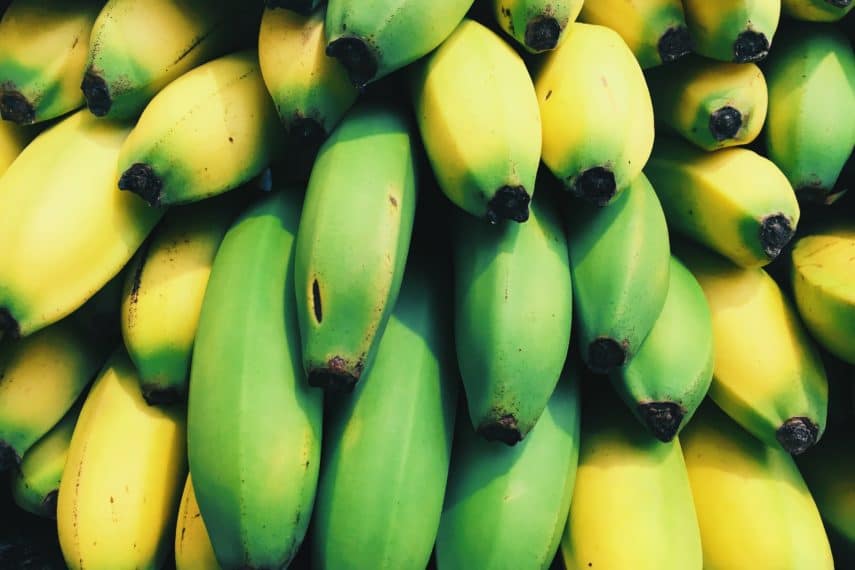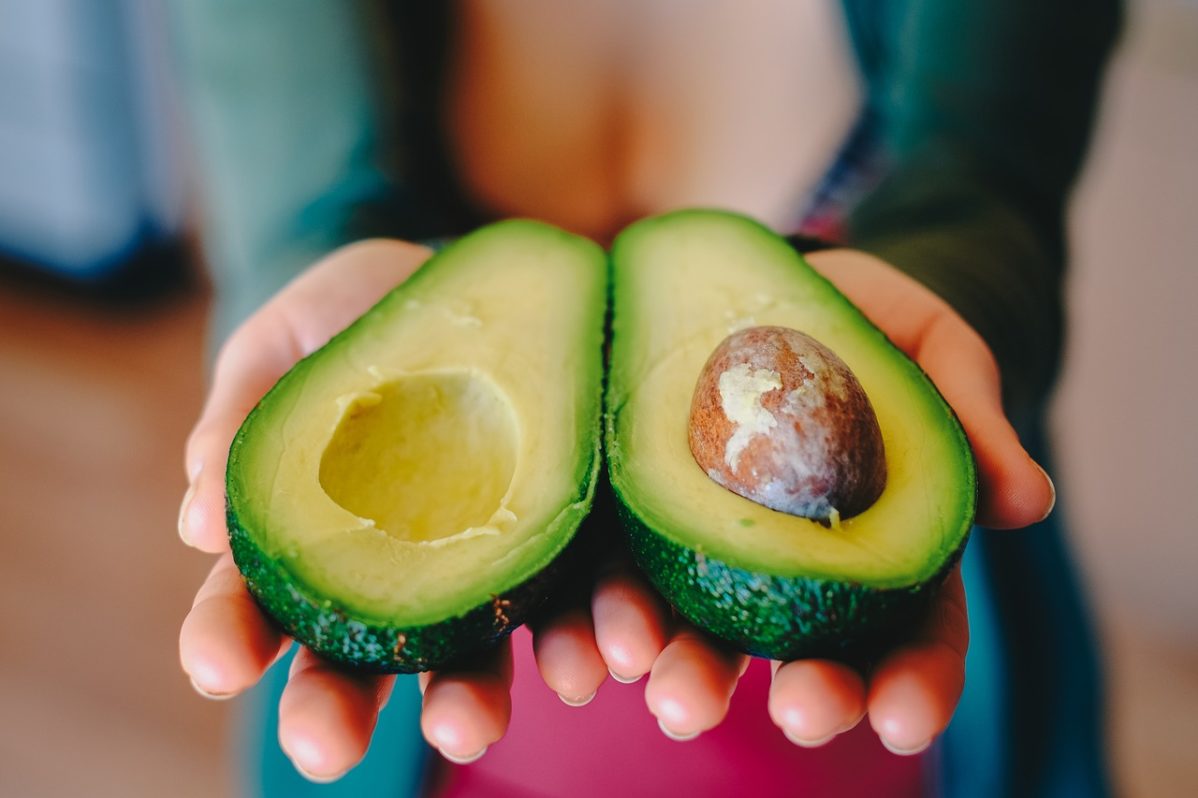FODMAP & Food Processing Series
Article 1
In this installment of my FODMAP and Food Processing series, I’ll focus on how and why dehydration, ripening and storage conditions affect the FODMAP content in fruit.
Want to learn more? Read our next articles in this series:
- How Fermentation Affects the FODMAP Content in Sourdough Bread and Dairy Foods
- How Fermentation Affects the FODMAP Content in Soy Foods and Cabbage

Monash University & FODMAP Friendly
Anyone familiar with the Monash University Low FODMAP Diet Smartphone App or the FODMAP Friendly app has doubtless found themselves wondering why some fruits get a Green Light when they’re in one form, and a Red Light when they’re in another. The reason for this is that the FODMAP content in plant foods is affected by storage time and temperature, water content, and ripeness among other things.
Because of this, fruits such as grapes and their dehydrated counterpart — raisins — have to be individually analyzed for FODMAP content; it’s not enough to test one and assume the same results for the other. Accordingly, the items I will be discussing have been subjected to laboratory analysis — just like all foods found in the both of the aforementioned apps.

You may want to read: How To Use the Monash University Low FODMAP Diet Smartphone App
These are the two apps that we recommend as these are the two entities that are conducting the lab testing and considered primary resources.

You may want to read: How To Use The FODMAP Friendly Low FODMAP Diet App
A Grape’s Defense Mechanism
Grapes and raisins were my gateway into the world of weird FODMAP science, but the main reasons grapes get a Green Light rating and raisins a Red are quite straightforward: a) we tend to eat more raisins than grapes because they’re so much smaller b) removing the liquid from high water content items such as fruit shrinks the overall volume of the food and concentrates all its other components.
In the case of grapes, one of the “other components” is oligos-fructans, i.e., the “O” in FODMAP.
The weird science part of why raisins are higher in FODMAPs than grapes has to do with the fact that the dehydration process actually increases their overall fructan content. Apparently, the same goes for fresh pineapple and papaya (paw paw in the Monash App) and the dried versions of these fruits.
The closest I could get to an explanation for why this might occur was a 2003 study showing that fructans help preserve a plants membrane barrier during dehydration.
Presumably, as the water content in grapes (and pineapple and papaya) decreases, the fruit generates fructans as a way to defend itself. Too bad humans can’t do the same thing − our skin only gets more fragile the drier it gets!

Bananas Also Defend Themselves
Bananas are another head-scratcher in the fruit category. I’ve been helping people navigate the low FODMAP diet long enough to have seen the common banana go from low FODMAP to high, and then somewhere in between.
This popular fruit is a great example of how environmental factors can influence a food’s FODMAP content.
Similar to grapes, bananas accumulate fructans as protection when their environment stresses them out. Cold weather is just such a stressor. While a cold climate is not typical of the tropics, where bananas come from, it is typical of the environment in which bananas are stored and ripened.
The longer a banana spends ripening in cold storage, the higher its fructan content. This means that if you’re sensitive to fructans, you may need to limit yourself to a measly ⅓ of a medium ripe common banana, i.e., the amount listed as low in FODMAPs in the Monash Smartphone App. Better yet, why not incorporate bananas into recipes like we did in these:
- Banana Bread Muffins
- Lower Fat, Reduced Sugar Banana Bread
- Low FODMAP Mocha Banana Smoothie
- Poppyseed Carrot Banana Bread

For more information, read our article, Are Bananas Low FODMAP? which delves even deeper into this beloved fruit.
Guava
Before you assume all unripe fruit is lower in FODMAPs, consider the guava. According to the Monash App, ripe guava contains little to no FODMAPs, while the unripe fruit is a fructose nightmare.
Why? I don’t know, but I’ll keep you posted as more information becomes available!
FODMAPs Can Change
And then we have changes in FODMAP content as seen in fruit like mango. Ripe, fresh mango has been shown to contain fructose in Monash University lab testing. Dried mango shows fructan content.
This is a great example of how we cannot make assumptions about how ripening and/or dehydration might affect FODMAP content of foods.
Let’s Look At Avocados
FODMAP Friendly overhauled their smartphone app in early 2022, not only from a design perspective but they also added many more tested and re-tested foods. They took both ripe and unripe avocados into the lab, and guess what? The FODMAP content did not change. Monash University has only lab tested ripe avocados, so this is new information for all of us.

You may want to read: Is Avocado Low FODMAP?
The Takeaway
When in doubt, check the Monash University and FODMAP Friendly smartphone apps for the most comprehensive and current information about your favorite foods. Both entities are constantly testing and re-testing foods and the apps are the best way to keep up-to-date.
In brief, the FODMAP content of grapes increases upon drying and becoming raisins; bananas show higher FODMAP content upon ripening; guavas show lower FODMAP content upon ripening; and in FODMAP Friendly lab testing, avocados showed no difference in FODMAP content between ripe and unripe.
If there’s anything I’ve learned in my years of working with this diet, it’s that things don’t always seem to make sense in the FODMAP universe!
So, what does this mean to you? We understand that this information can seem confusing. We suggest that you look at it this way: lab testing is accurate, but you are not a lab. Lab testing is representing the samples that were tested at a particular time, and the fruits and vegetables you eat will be different. They will be from different countries and climates, harvested at different times, storage procedures will vary. They might not even be the same varieties. Look at lab tests as lines in the sand from which to begin your exploration of FODMAPs. How you tolerate a particular food is what is important.
For more information on how tests are conducted, please read our articles Monash University Lab Testing Explained and also FODMAP Friendly Lab Testing Explained.
Here at FODMAP Everyday® we strive to bring you information that we hope makes navigating this diet a little bit easier and a whole lot more delicious!
Want to learn more? Read our next articles in this series:
- How Fermentation Affects the FODMAP Content in Sourdough Bread and Dairy Foods
- How Fermentation Affects the FODMAP Content in Soy Foods and Cabbage
References:
Ingrid J. Vereyken, Vladimir Chupin, Folkert A. Hoekstra, Sjef C. M. Smeekens, and Ben de Kruijff. The Effect of Fructan on Membrane Lipid Organization and Dynamics in the Dry State (https://www.ncbi.nlm.nih.gov/pmc/articles/PMC1302958) Biophys J. 2003 Jun; 84(6): 3759–3766.
Update: Bananas Re-Tested! (https://www.monashfodmap.com/blog/update-bananas-re-tested). May 16, 2017. Citation from Monashfodmap.com.
UPDATE! Newly tested foods: the mysterious case of the guava (https://www.monashfodmap.com/blog/guava-recipes). March 22, 2016. Citation from Monashfodmap.com









Hi,
Can you tell me if powdered greens, such as Nature’s Way Greens+ would be regarded as high or low FODMAP. I don’t eat greens as they all taste quite bitter so add about 15 grams to a smoothie each day. I am looking at trying a low FODMAP diet as I have suffered from low energy and aches and pains for quite a while.
Thanks
Mike Locke
Hi Mike, I can’t comment on all powdered greens, but this one has a looooooong list of ingredients that includes items that we know are high in FODMAPs as well as ones of undetermined status.
Since this product has undergone a processing method (dehydration) that can alter the FODMAP content in foods, we can’t be sure about the FODMAP status of many of these ingredients, but there is one clear disqualifier if you are sensitive to the “O” group: inulin.
You can always test your personal tolerance to this product in the same way one evaluates individual foods during the challenge/reintroduction phase of the low FODMAP diet, but if you have not already completed all three phases of the diet, I’d do that first.
Are freeze dried strawberries, blueberries and pineapple acceptable for low fodmap diets?
Hi Kathy, as you may surmise, since these fruits have not been lab tested, we do not know the FODMAP content of them. Strawberries, having no FODMAPs present in their fresh form, would be worth trying for sure. I have had all of these fruits freeze dried and tolerate them, but your tolerance is what is important. You might find our article on What If A Food Has Not Been Tested For FODMAPs? to be interesting.
Paw paw is its own fruit (asimina triloba). It’s not a papaya (carica papaya). Though I agree that the Monash test for dried paw paw is unlikely to be the asimina triloba, which is primarily grown in the southern United States and is probably not common in Australia or Europe. In which case perhaps the Monash did actually test dried papaya.
Marla, it appears that you are noticing certain details that do need further explanation. We have contacted Monash about many app entries for more specific information about what exactly was tested in the lab and unfortunately more details were not available and shared. It appears that your brain and mine share a certain laser-focus when it comes to specificity. I think you will enjoy our article on Cocoa. You might have noticed on the app that “cacao” and “cocoa” are listed separately…read the article and let me know what you think. There is no difference botanically between cacao and cocoa, which I delve into in the article and had a conversation with Monash about. As to the exact botanical “paw paw” fruit that was tested by Monash, I invite you to write them on their Facebook page and ask. I don’t want to be the only one constantly querying. Then report back for sure!
If this thread is still open – – can you speak about freeze dried foods and fodmap – – most specifically freeze dried vegetables. They seem convenient way for me and my family to get in more veggies wherever we find ourselves to be. Most veggies that are freeze dried seem to be raw – – which might impact your suggestions/guidance.
Much appreciate any info you may have on freeze dried veggies for fodmap folks.
HUGE important question. We are working on an article about HOW both Monash and FODMAP Friendly test foods for their apps. They apparently “often” test freeze-dried foods…….when I have asked if this means that we “know” that freeze drying does not affect FODMAPs, I have received insufficient answers. This is a work in progress for me to get to the bottom of…but now you have some interesting info. Also read this article.
Thanks very much!
Instant gratification monster wished we knew now but grateful you are on it and looking forward to what you find out.
Info. and article much appreciated.